 by The Most Rev. Shaun McCann
by The Most Rev. Shaun McCann
By the rowan and the brier
By the raging forest fire
By the sky in lightening torn
By the moon that’s newly born
By the rising of the sun
By the task that I have done
I bind my feeble soul to thee
Almighty, Son, and Spirit three.
~ Fr. David Adam
The Christian mystic, St. John of the Cross once noted that God’s first language is silence – but if the Divine Beloved, who is beyond all language, has an earthly tongue, then it is almost certainly that of Nature itself.
Whether seeking to put human words on the more-than-human, the beyond-human or the non-human – the work of expressing the Ineffable has always been a universal challenge found in harmony across religious or spiritual traditions. The diverse history of Christian expression and variety is a testament to this.
Out of this rich history of human journeys to express the inexpressible has been born many masterpieces of music, architecture, poetry, and storytelling, or they have served as the progenitors from which many of these expressions have begun, grown or been immortalized.
The aural tapestry of polyphony, the magnetic upward pull of eye, heart and mind to vaulted cathedral ceiling, the dancing play of stained glass sunlight cast across the frankincense adorned air of sanctuary and chapel, or the reverent eyes of silent icons that follow the timeless procession of seeker and initiate into the heart of every temple – these all seek to give shape, form and expression to that which by its very nature, defies limitation.
Underlying every theology, every ritual, and reflected in the eyes of thousands of years of adherents, is the quest to incarnate the infinite in the finite; to take hold of the timeless Divine even if for fleeting moments.
 In Christianity, tangible expressions are not only born from this impulse but also attempt to communicate or generate it. A notable example of this is the Sacrament of the Eucharist, in which the spiritual reality is not merely signified in the expression, but the expression can directly participate, create or become the thing it signifies.
In Christianity, tangible expressions are not only born from this impulse but also attempt to communicate or generate it. A notable example of this is the Sacrament of the Eucharist, in which the spiritual reality is not merely signified in the expression, but the expression can directly participate, create or become the thing it signifies.
Unfortunately over time, this interchange of experience and expression has just as often led to a blind spot of where the Divine is to be encountered, and Christianity in its quest to honour the Divine has neglected the treasure for the sake of which it has travelled both distance and time. There is a present day amnesia about what is literally under its feet and the ground upon which it stands.
In the meeting of the worlds of Christianity and nature-centered spirituality, particularly as expressed by modern Druidry, there is not only an opportunity whereby each can explore, enrich and experience each other, there is also a space where Christianity can more fully experience itself in a new way, or perhaps an old way – a timeless way.
It is natural and human for us to seek to express the individual spiritual impulse with things of the highest and most grand order of magnitude which we can conceive. When trying to grasp the Ineffable, we naturally reach for those symbols which are transcendent enough to do justice to this spiritual reality but are also instinctively or intuitively understood and universal to human experience.
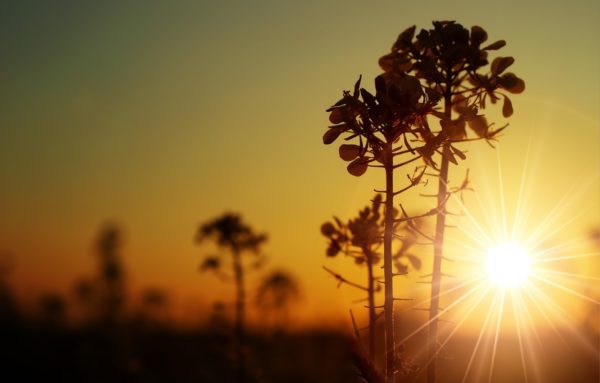 Yet too often for its long and storied history of art, Christianity and Christians both intellectually and experientially forget that there’s only one thing on earth common to each human being which truly expresses that sense of magnitude which does justice to the Divine – the sweep and beauty of the fullness of the natural world. Springing forth, from a perspective of deference and humility before the Divine Beloved in this way, comes a vista of spiritual exploration and reflection which opens up when we realize that many human symbols are but homage to this reality.
Yet too often for its long and storied history of art, Christianity and Christians both intellectually and experientially forget that there’s only one thing on earth common to each human being which truly expresses that sense of magnitude which does justice to the Divine – the sweep and beauty of the fullness of the natural world. Springing forth, from a perspective of deference and humility before the Divine Beloved in this way, comes a vista of spiritual exploration and reflection which opens up when we realize that many human symbols are but homage to this reality.
Mountains as basilicas to the heavens, stones as altars of the Most High, rivers as the coursing of the spirit of God, the trees as banners in the processional of time, or pillars in a cathedral of nature, the echo of song from the choir of winds, the face of the deep reflecting the face of the Divine. Nature effortlessly and organically exemplifies those profound symbols which humanity has used as metaphors to comprehend the Infinite. The depth of the oceans, the illumination of the flame, the liberating expanse of the sky.
As the continental drift of Christianity continues a slow sail further from its ancient roots, this is a language it is slowly losing the ability to think in, even if its texts and hagiographies speak in a way that is punctuated with its poetry.
Scripture, from canonical texts such as the Hebrew Bible and Greek New Testament, to the non-canonical, apocryphal and pseudepigraphical works such as those found in the Nag Hammadi Library, are a treasury of this imagery. Yet we overlook its tangible counterparts over our heads, before our eyes, and under our feet.
God’s voice in the fire which burns but does not consume, the seekers in the desert guided by pillars of cloud and flame, John the Baptist plunging initiates under flowing water to be born anew, Jesus using the very ground under his feet to heal the blind and calling forth Lazarus from the womb of the earth, the voice of the seven thunders speaking the ineffable.
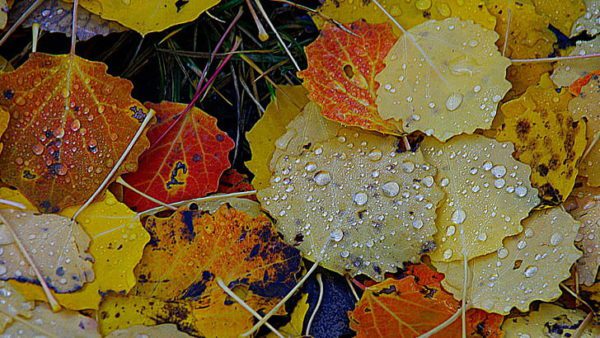 Centuries of seeking to incarnate the Divine through human human hands has caused many Christians and expressions of Christianity to lose sight of the wisdom found in some of its own theologies and historic traditions which implicitly includes Nature as a part of its spiritual universe – namely, panentheism.
Centuries of seeking to incarnate the Divine through human human hands has caused many Christians and expressions of Christianity to lose sight of the wisdom found in some of its own theologies and historic traditions which implicitly includes Nature as a part of its spiritual universe – namely, panentheism.
Christian theology carries within itself not only nature as symbol and metaphor for the Divine, but nature as an expression, emanation and aspect of the Divine.
Odds are, if you’re a Christian exploring the possibilities of pagan practice, you have undoubtedly seen paganism framed in terms of Pantheism. The depth of this association or its universality is better left to scholars and expert pagan practitioners rather than myself, as I am neither, but there are many of each whom you will encounter in the significant and enlightening Mount Haemus lectures found in the Order’s resources.
Pantheism, from the Greek pan-theos, popularized by John Toland, whom exoteric and esoteric history credits with being a central figure in setting the stage for the Druid Revival, means all and divine respectively. It is the idea that reality and divinity, or perhaps nature or the universe and divinity are one for one, that is- one and the same.
Embedded within the ancient history of Christian theology and found today among a significant number of adherents, particularly in the orthodox East, and heterodox expressions in the West, is that of the aligned but different concept of panentheism.
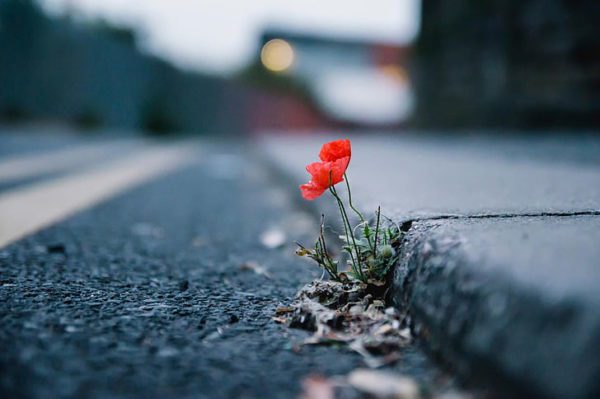 From the Greek pan-en-theos, “all in god” – panentheism holds that the Divine interpenetrates or is in all things and fills the material universe, and yet exists beyond it as well. That the entire universe exists within the Divine and the Divine is bigger than the universe – and thus both immanent and transcendent. Both all-pervading and all-encompassing, God is neither separate from nor identified with the universe.
From the Greek pan-en-theos, “all in god” – panentheism holds that the Divine interpenetrates or is in all things and fills the material universe, and yet exists beyond it as well. That the entire universe exists within the Divine and the Divine is bigger than the universe – and thus both immanent and transcendent. Both all-pervading and all-encompassing, God is neither separate from nor identified with the universe.
This is also consonant with my own view and that of the Apostolic Johannite Church, the Gnostic Christian Church in which I serve.
Hand in hand with this view, at least in my own case is one of the common tenets of both ancient and modern iterations of Gnosticism and Gnostic Christianity (from the Greek word Gnosis, which refers to knowledge of the experiential kind) is that of an emanationist cosmology – that the Universe is the result of the emanation of the Divine, like ripples from from a stone cast in the waters of eternity rather than a single moment of willful divine creation.
In the case of panentheism, this isn’t some ancient heresy or insignificant view shared by a few but is implicitly and explicitly sown into millennia of Christian theology yet somehow forgotten, overlooked or misunderstood. When this perspective is recovered, it reestablishes humanity in the fullness of spiritual context.
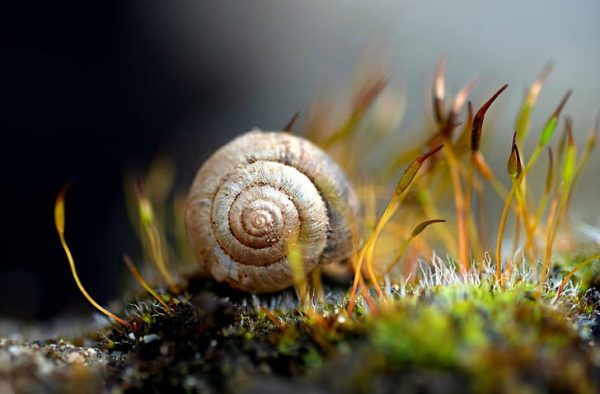 In the collection of works we now know as the canonical New Testament, whenever a figure referred to ‘the scriptures’ – to what did they refer? Not to Christian scripture as we know it but as they knew it – being the Hebrew Bible, or the Old Testament so-called. Sometimes we forget this as many are rooted in reading the present into the past.
In the collection of works we now know as the canonical New Testament, whenever a figure referred to ‘the scriptures’ – to what did they refer? Not to Christian scripture as we know it but as they knew it – being the Hebrew Bible, or the Old Testament so-called. Sometimes we forget this as many are rooted in reading the present into the past.
Similarly, it is all too common to see our spiritual or physical ancestors under our terms rather than on their own terms. Progress in the form of education, inclusion, science and technology is worthy of celebration but when we recall and look outward through the spiritual eyes of our ancestors – we rekindle something that is too easily lost at times in the pace of change – mystery and wonder.
Placed in perspective, our progress does not dispel the mystery and wonder of former ages but can build on it with an understanding that unfolds greater wonder and beauty than truly known without.
The primal power of the ‘sky in lightening torn’ as the poet and priest Fr. David Adam has scribed, is not lessened by the knowledge that each bolt releases a gigajoule of energy. That is enough power to enable you to surf this website for hundreds of days non-stop. We are not lessened by this knowledge, we now have a full appreciation of what a sky torn by the lightning flash really means – not mere beauty but scale and scope and where we sit within it – it doesn’t discard respect for that power, it embraces it.
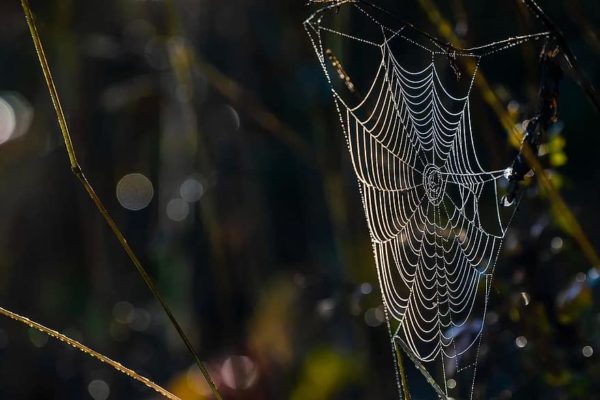 At this very moment, dwelling within you are elements of the mineral world, the vegetable world and the animal world, drawn up from the depths of the sea, raised in the arc of the sky and alive in the foundation of your bones, and not only the substance of the world but the very stars themselves. This knowledge does not separate us from nature, it places us at once within it, a part of it, and the result of it.
At this very moment, dwelling within you are elements of the mineral world, the vegetable world and the animal world, drawn up from the depths of the sea, raised in the arc of the sky and alive in the foundation of your bones, and not only the substance of the world but the very stars themselves. This knowledge does not separate us from nature, it places us at once within it, a part of it, and the result of it.
In an emanated and panentheistic universe, the Divine interpenetrates all things in the same way that all things interpenetrate ourselves, and from this perspective Nature becomes our elder sibling, rippled out from the same Divine source.
Christian mystics, of both orthodox and heterodox strains, have known this when they speak of reading and learning from the Book of Nature.
When the ancient Christians, especially those in Celtic lands, walked out into the land and nature, they encountered a world alive with the Divine, a transcendence made immanent under every stone, hanging from every branch, and whispering in every brook. Panentheism puts this experience into a concept that is communicated in orthodox Christianity but rarely sought out in practice and one for which Druidry can help Christianity make a reconnection to itself.
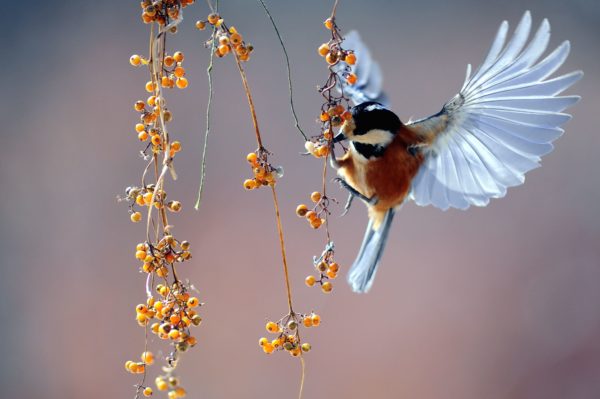 The re-enchantment of the landscape of Christian experience begins with a re-enchanting shift in theological perspective. The myths, stories, meditations and perspective of modern Druidry offer Christianity ancient trackways to learn and embrace beyond its borders but also to better understand its own history and spirituality.
The re-enchantment of the landscape of Christian experience begins with a re-enchanting shift in theological perspective. The myths, stories, meditations and perspective of modern Druidry offer Christianity ancient trackways to learn and embrace beyond its borders but also to better understand its own history and spirituality.
To be sure, Christianity in the lands of the Druids has roots in time that stretch back of their own accord, with the stories of St. Joseph of Arimathea, St. Alban, St. Columba, St. Patrick, St Brigid, St. Ninian, St. Nectan, St David and so many more. While historically we have little record for much of a then contemporary overlap, it should be no surprise that the power and force of myth in both Christianity and modern Druidry came together historically in the modern era with a flowering of stories towards a hybrid Celtic Church that inhabited a liminal and twilight space as the historical spiritual landscape shifted – one that was neither solely Christian nor Pagan but became the inheritance of each other as we know them today. While much of this is aspirational rather than firmly historical, it is an aspiration which does both paths credit.
That some of the central figures of the original Druid Revival were themselves Christian (albeit heterodox) and some even clergy cannot be discounted, most notably Iolo Morganwg (Edward Williams) and the Rev. William Stukeley respectively, the latter being an Anglican priest who self-identified as a Druid. These figures served as driving forces for preservation and study of sacred sites, Celtic culture and language.
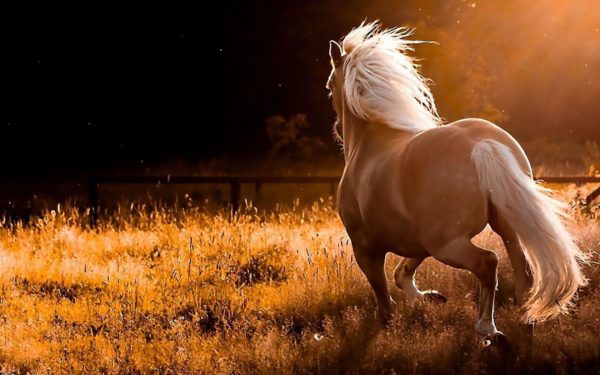 This participation continues in the present day with many Christians who draw spiritual, mythological and personal value from Druidry as expressed by communities such as the Order of Bards Ovates and Druids, including both more mainstream and less orthodox laity and clergy.
This participation continues in the present day with many Christians who draw spiritual, mythological and personal value from Druidry as expressed by communities such as the Order of Bards Ovates and Druids, including both more mainstream and less orthodox laity and clergy.
It is also worth remembering the notable figures within and without the Order itself who have found value in the interchange between Pagan and Christian thought and practice. This includes two very significant and pivotal modern figures – both the founder of the Order of Bards, Ovates and Druids, Ross Nichols, and the founder of modern Wicca, Gerald Gardner, both ordained in Neo-Celtic expressions of the Independent Sacramental Movement, which the past Chosen Chief, Phillip Carr-Gomm has spoken of in his many fine talks and works.
It was not beneath either of their respective Christian or Pagan worldviews to embrace or recognize in common, the best of their counterparts as an enrichment or perspective on their own paths. They recognized then, as we should recognize now, that there is a shared space in the land and the stories we tell about the land, and most importantly, the stories the land can tell us – about ourselves, each other and the Divine.
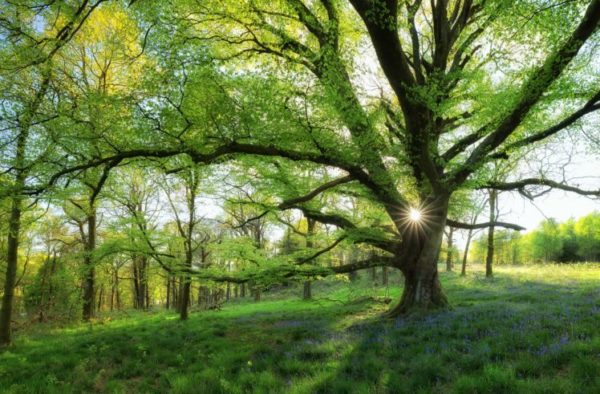 Christianity, particularly its Celtic and Neo-Celtic expressions, can offer to Druidry a poetic, folk and bardic-like continuity of hagiography and mysticism where the oral tradition of the ancient Druids fell silent beneath Roman steel.
Christianity, particularly its Celtic and Neo-Celtic expressions, can offer to Druidry a poetic, folk and bardic-like continuity of hagiography and mysticism where the oral tradition of the ancient Druids fell silent beneath Roman steel.
Druidry in turn offers a lived, ancient and yet fully present reality of timeless mythology, insightful narrative and ritual built around the land and nature – a power of myth and experience-centered practice which not only enables us to have a richer understanding of our fellow non-Christian seekers, but also builds a modular toolkit which enables us to examine our own tradition in a new way.
In speaking of what these traditions can offer to each other, a mention must also be made of that symbol which belongs neither wholly to Christianity or to Druidry, but is the common mythological, aspirational and spiritual heritage held between them – the Grail.
Implicit in the form of the Cauldron which is seeded throughout the landscape of pagan mythology but particularly in the Welsh Mabinogion with its Arthurian themes and made explicit in the Christian romance stories originating in the age of troubadours, trobairitz and minnesingers, comes the Grail.
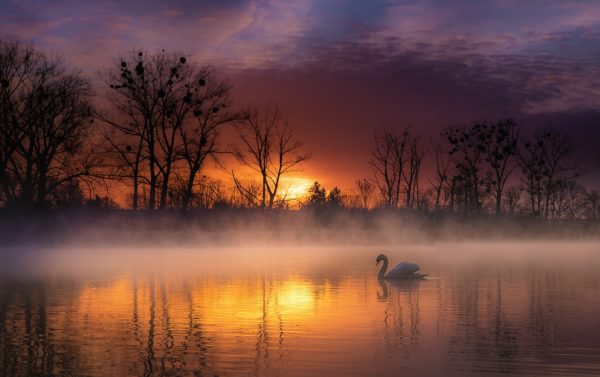 As the preeminent personification of both the spiritual quest and its goal, the Grail mythology told in story, song and poem, is a transcultural narrative and spiritual language that not only speaks to one’s relationship to the spiritual and natural realms but also one’s own relationship to oneself in the course of the spiritual journey.
As the preeminent personification of both the spiritual quest and its goal, the Grail mythology told in story, song and poem, is a transcultural narrative and spiritual language that not only speaks to one’s relationship to the spiritual and natural realms but also one’s own relationship to oneself in the course of the spiritual journey.
While there is much more to this shared space than can be explored in this paper, the imperative principle that can be drawn up from its deep well with ease is the shared ideal that the Grail serves as pointer to – which can function not only as a guiding principle in how Christians and Pagans see each other, but also how each approaches the path and the world.
There is an old story which illustrates this, known as the Parable or Allegory of the Long Spoons, which marks out the contrast between a place of torment and that of paradise. In the place of torment, guests are seated at a banquet equipped with spoons that are too long and unwieldy to be able to feed themselves, and they are continually hungry. In the place of paradise, the table setting is exactly the same – the difference is that the guests use the long spoons to feed each other.
The heroes of the Grail stories did not drink from the Grail themselves, it was achieved for those around them. I would go as far as to suggest that the Grail is not truly achieved until it is offered in service to another.
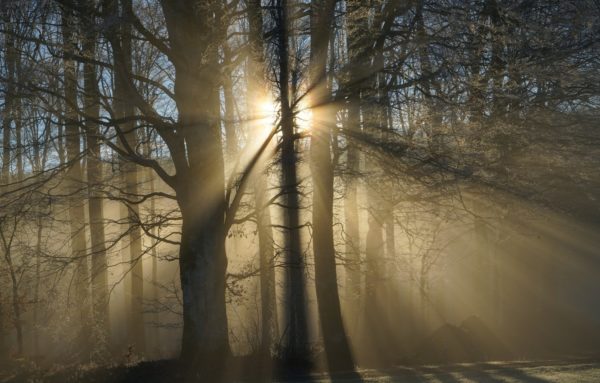 Like the shared symbol of the Grail, the exploration of our commonalities and differences creates a trackway in the forest of the world that can lead us to living our own principles more fully.
Like the shared symbol of the Grail, the exploration of our commonalities and differences creates a trackway in the forest of the world that can lead us to living our own principles more fully.
Whether seen as the canonical scriptural view of each human being made in the image of God – or the Gnostic viewpoint of each human being possessing the Sacred Flame, the Divine Spark whose apprehension brings salvation from sleeping selfhood – seeing the Divine in the person of our fellow humanity is an essential quality of any spiritual path walked with integrity.
In moments of difficulty – be they personal, societal or global, seeing the Divine in one another can be a challenge. When the face of the Divine does not become readily visible in the face of either neighbour, stranger or self – it is in those most challenging of moments that a reconnection with the Divine and re-enchantment of our world and life isn’t just important, it is essential.
In those moments when we cannot see the Divine in ourselves or each other – we have an opportunity to keep that flame lit by seeing and experiencing it through the agency of our elder sibling – Nature. It is under her care that mystery, wonder and the sacred can be nurtured until we are able to become, as Meister Eckhart has said, “mothers of God, for God is always needing to be born.”
 That the Divine is both seen in the simple and overlooked staple of life and offered in refreshment and communion to and with each other is a fundamental lesson of the central Christian Sacrament of the Eucharist. When Jesus instructed his Apostles at the Last Supper that bread and wine would be the body and blood of the Divine, he didn’t say ‘This is a great symbol for my body’. He declared it to be his body.
That the Divine is both seen in the simple and overlooked staple of life and offered in refreshment and communion to and with each other is a fundamental lesson of the central Christian Sacrament of the Eucharist. When Jesus instructed his Apostles at the Last Supper that bread and wine would be the body and blood of the Divine, he didn’t say ‘This is a great symbol for my body’. He declared it to be his body.
As powerful as the transformation of the elements of the Eucharist into the Divine, the Infinite into the Finite, is the transformation of our perception which can come from approaching the world in this way- seeing the Divine in the world around us and recognizing it as an element of wholeness by which to heal and be healed. When we begin to see and care for the world and those in it in the same way as the eucharistic bread, the veil falls and the Kingdom of Heaven is made present around us.
Finally, as an underline to some of the explorations I’ve made, we can turn at last to the exemplar of Christian practice – Christ, who in his own moments of introspection, spiritual pilgrimage, and even time of trial did not go to the temple – he went upon the water, into the wilderness and into the garden – to hear the word of the Divine.
